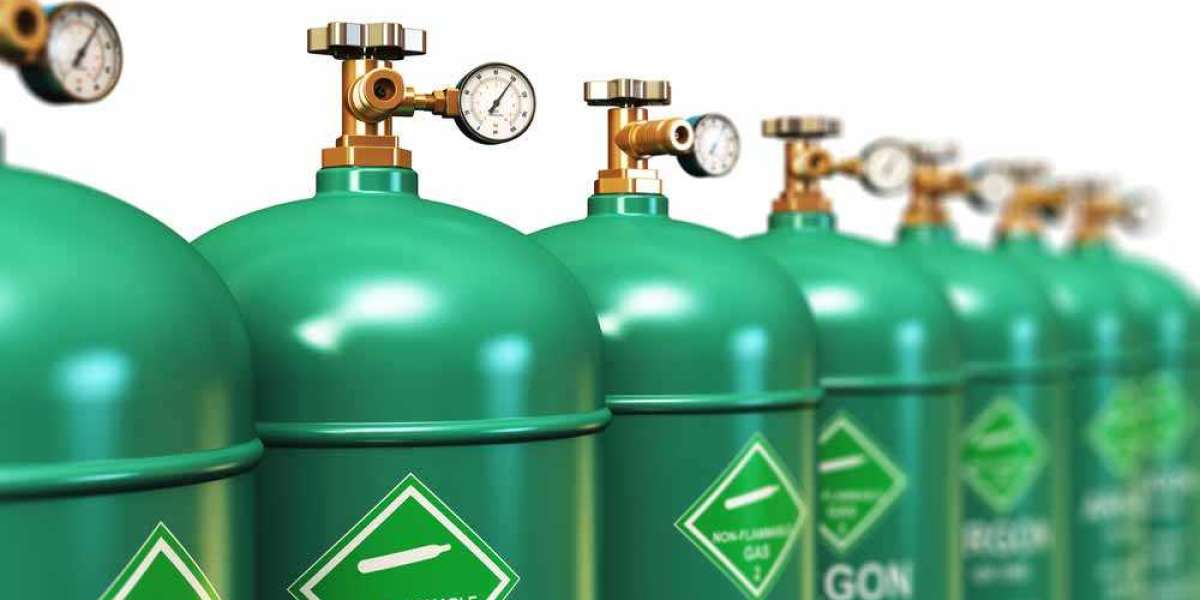Argon gas cylinders, commonly referred to as argon tanks or argon bottles, are essential components in various industries and applications. Argon, a noble gas, finds extensive usage due to its inert nature and unique properties. In this article, we delve into the diverse uses, types, and safety precautions associated with argon gas cylinders.
Uses of Argon Gas Cylinders: Argon gas cylinder serve numerous purposes across different sectors, owing to the versatile characteristics of argon gas. One primary application is in welding processes. Argon acts as a shielding gas in TIG (Tungsten Inert Gas) welding and MIG (Metal Inert Gas) welding, where it prevents atmospheric contamination and ensures a clean weld. The stable arc provided by argon enhances the quality and strength of welds, making it indispensable in industries ranging from automotive to aerospace.
Moreover, argon finds utility in the preservation of perishable goods. In the food industry, argon gas cylinders are utilized to displace oxygen during packaging, thus extending the shelf life of products. Similarly, in the healthcare sector, argon is employed in cryosurgery and cryopreservation due to its low reactivity and ability to maintain low temperatures.
Another significant application of argon gas cylinders is in the manufacturing of semiconductors and other electronics. Argon serves as a carrier gas in chemical vapor deposition processes, ensuring the deposition of thin films with precise thickness and uniformity. Additionally, argon is utilized in gas chromatography and spectrometry techniques for analytical purposes.
Types of Argon Gas Cylinders: Argon tank cylinders come in various types and sizes to cater to diverse requirements. The most common types include high-pressure cylinders and liquid argon dewars. High-pressure cylinders store argon gas under pressure, typically ranging from 2000 to 4000 psi (pounds per square inch). These cylinders are constructed from high-strength materials such as steel or aluminum to withstand the pressure.
Liquid argon dewars, on the other hand, store argon in its liquid state at extremely low temperatures. These dewars are designed with double-walled vacuum insulation to minimize heat transfer and maintain the liquid state of argon. Liquid argon is preferred in applications where high purity and precise flow control are essential, such as in laboratory experiments and medical procedures.
Safety Precautions for Handling Argon Gas Cylinders: While argon gas is non-toxic and non-flammable, proper precautions must be observed during handling and storage to ensure safety. Here are some essential safety guidelines:
- Proper Ventilation: Always use argon gas cylinders in well-ventilated areas to prevent the accumulation of gas, which can displace oxygen and lead to asphyxiation.
- Secure Storage: Store argon cylinders in a secure, upright position to prevent tipping or damage. Ensure that cylinders are adequately restrained to prevent them from falling.
- Avoid Physical Damage: Handle argon cylinders with care and avoid dropping or striking them against hard surfaces. Damaged cylinders may leak or rupture, posing a significant safety risk.
- Use Appropriate Regulators: When connecting regulators to argon cylinders, ensure that the regulators are compatible and suitable for the intended pressure range. Improperly fitted regulators can result in gas leaks or sudden pressure releases.
- Leak Detection: Periodically check argon cylinder connections and fittings for signs of leaks using soapy water or leak detection solutions. If a leak is detected, immediately shut off the gas supply and rectify the issue.
- Emergency Preparedness: Familiarize yourself with emergency procedures and equipment, such as shut-off valves and safety showers, in case of accidental releases or leaks.
By adhering to these safety precautions, the risks associated with handling argon bottle cylinders can be minimized, ensuring a safe working environment for all personnel involved.
In conclusion, argon gas cylinders play a vital role in various industries and applications, offering unparalleled versatility and reliability. Whether used in welding, food preservation, electronics manufacturing, or scientific research, argon gas remains indispensable. However, it is crucial to handle and store argon cylinders with care and observe appropriate safety measures to mitigate potential hazards. With proper precautions in place, argon gas cylinders continue to facilitate innovation and progress across diverse sectors.








